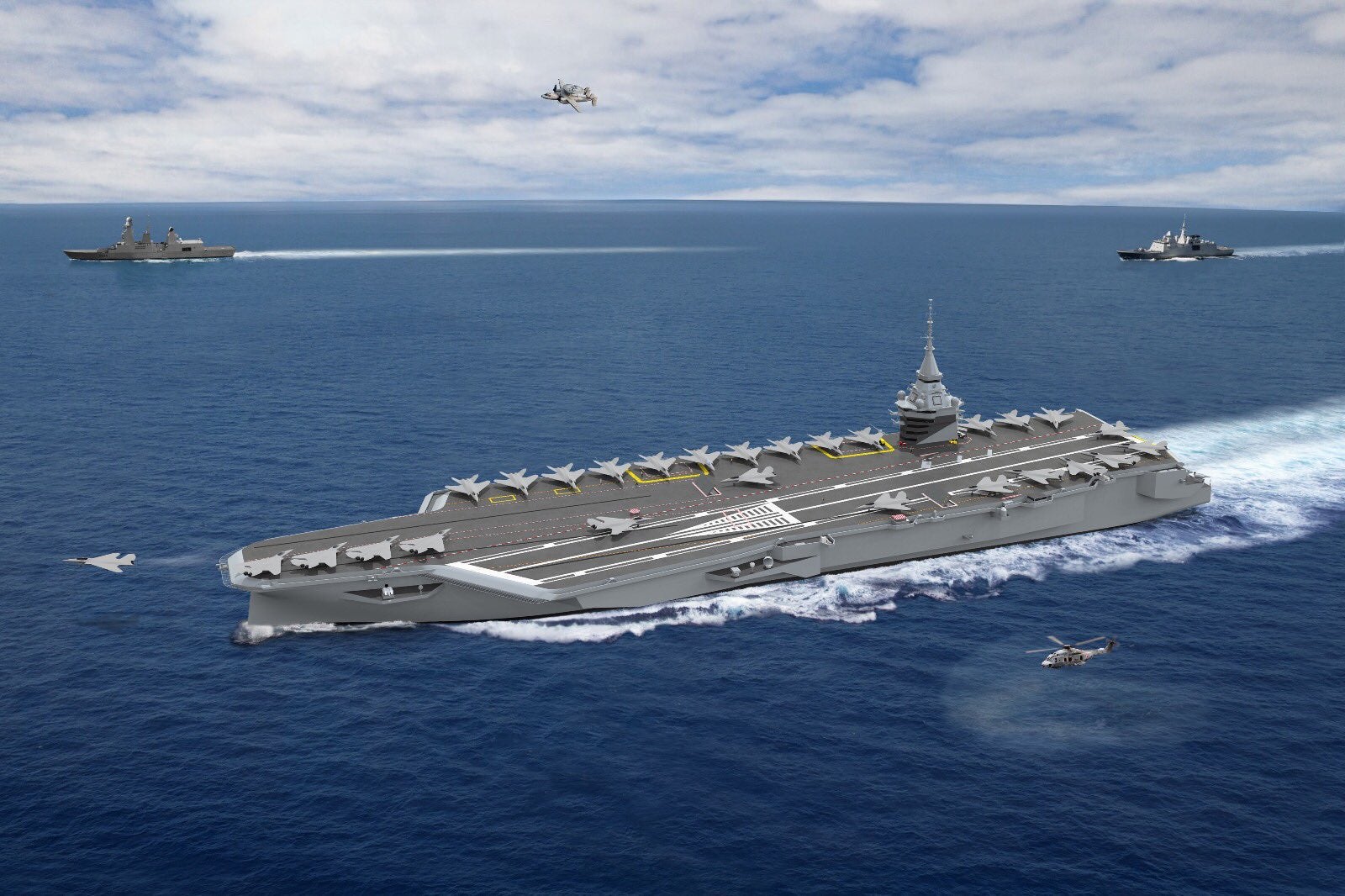
The mammoth ship will be larger than the aircraft carrier it is set to replace and will feature an electromagnetic catapult system that will be used to launch Rafale fighter jets and a future maritime variant of the in-development Future Combat Air System (FCAS).
The new carrier is set to be in-service in 2038, the year Charles De Gaulle is due to be retired with construction on the new vessel expected to begin in 2025.
The ship is expected to use the General Atomics Electromagnetic Aircraft Launch System (EMALS) system that is currently being fitted on the US Navy’s Gerald R. Ford-class aircraft carriers.
France said it chose to pursue a catapult launch design as it would give its future aircraft carrier the flexibility to launch a wider variety of aircraft from the ship including drones, the future FCAS fighter and the Northrop Grumman E-2D Advanced Hawkeye.
Macron made the announcement during a speech on the importance of nuclear energy to France at Framatome in Le Creusot. The president said that France’s strategic future relied on the use of nuclear power. The country is also in the process of building a new fleet of Suffren-class nuclear submarines.
 Image: Ministère des Armées.
Image: Ministère des Armées.
The French Defence Minister Florence Parly said that the decision to develop a nuclear-powered carrier would ensure autonomy when it came to operations and would help to maintain skills in the French nuclear industry.
The future vessel is expected to weigh 75,000 tonnes and be 300 metres long, 20 metres longer than the UK’s new Queen Elizabeth-class carriers which use ski-jumps rather than catapult launch systems.
The French Defence Ministry said the vessel would be capable of travelling at 27 knots and be crewed by 2000 sailors. The ship is set to be powered by a pair of K22 boiler rooms. The K22 is expected to generate 220 MW of energy and is a derivative of the K15 boiler rooms used on Charles De Gaulle.
The ship will be able to carry 30 maritime variants of the FCAS, which is in joint development between France and Germany. The FCAS is set to replace France’s Rafales and Germany Typhoons.
The ship is set to hit the water in 2036 to allow for two years of sea trials before the vessel fully replace the Charles De Gaulle. Further development of the ship and boiler rooms is expected to cost around €900m, €117m of which is to be spent in 2021.
This money will cover the continuation of the programmes development phase before the ship is ordered and construction work begins in 2025. France has not put an official figure on what it expects the programme to cost, but the French Defence Ministry has said it will be in the billions.
Naval Group, which built the Charles De Gaulle, quickly welcomed Macron’s decision to formally launch the study for the next-generation carrier saying it would be involved in the project alongside partners Saint-Nazaire shipyard Chantiers de l’Atlantique, nuclear reactor designer and maintainer TechnicAtome and the aircraft manufacturer Dassault Aviation.
Naval Group chairman and CEO Pierre Eric Pommellet said: “We are delighted with the announcement by the President of the French Republic, which will enable France to maintain its position in the very restricted circle of major powers holding a nuclear aircraft carrier.
“This project will help develop jobs in the defence industrial and technological base and ensure the continuity of our skills in the current health and economic crisis. Naval Group, its partners and its entire ecosystem will enable the French Navy to benefit from the best naval systems for its flagship.”
The company also worked on Charles De Gaulle’s predecessor carriers Clémenceau and Foch.
Pommellet added: “Finally, this project will make it possible to develop innovation in the fields of propulsion and high added-value military systems, thus maintaining France’s technological lead and its position as a key geostrategic player. This is a huge pride for Naval Group to begin the building of the biggest warship France has ever built”.
It is projected that over the next two decades, the number of operational aircraft carriers will increase from 28 to 36.



